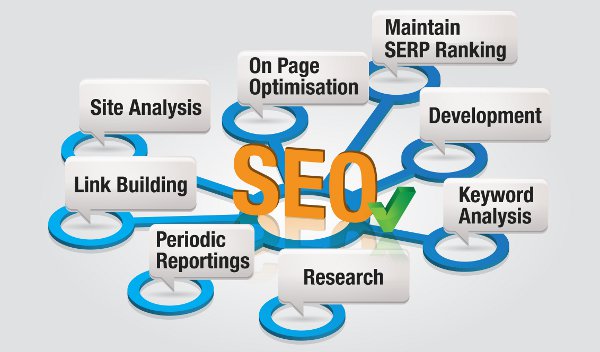With all the aspects that can fall under the category of on-page SEO efforts, it can be a daunting and menial task to ensure that each and every page on your website has all its on-page SEO in top shape. But although this may not be your favorite part of managing your website, on-page SEO has a huge importance when it comes to being found on search engines and enticing readers to give your website a look.
While there are many obvious parts of on-page SEO, like content and images, we’re going to address some of the smaller aspects of on-page SEO that can actually have a large positive impact on your metrics if you use them correctly.
Internal Linking
Links are a huge part of SEO. But while a lot of your energy might be spent on getting outside links or backlinks, just as much emphasis should be placed on your internal linking system as well. According to Moz.com, having a logical and useful internal linking structure can benefit your website and on-page SEO by making it easier for users to navigate around your site, creating a hierarchy of information, and spreading ranking power throughout various pages. All websites can see improvement by focusing on these three key benefits of a strong internal linking structure.
Semantic Keyword Targeting
Everyone involved in SEO knows that keywords are important, but what many people have only recently realized is that topic targeting or semantic keywords are just as important for creating relevance as exact match keywords. This means that rather than trying to rank for specific keywords on each page, you’re trying to make yourself an authority around a bigger, more expansive topic that also entails those specific keywords. This type of targeting requires a little tweak in your keyword research, as shown by Akshay Hallur of GoBloggingTips.com. But by using semantic keywords within your website, you’ll see your relevancy and trust level rise with your visitors.
Once you’ve decided which semantic keywords or general topic you’re going to be targeting, try and create high quality content in that area. This will not only bring you traffic via longtail keyphrases you hadn’t considered, but will help position your brand as an authority in your field. For example, if you’re targeting health, start producing guides, articles, infographics or whatever other content you can comfortably create around topics such as obesity, heart disease, sugar intake, healthy eating, etc. and you’ll find your SEO improving at a much quicker rate, compared to the more traditional targeting of specific exact-match keywords.
Reader-Friendly Title Tag, Meta Description, and URL
Title tags, meta descriptions and your URL are the first thing visitors see when they search using a search engine. For this reason, these small areas of on-page SEO deserve a lot of your attention. To help get the most out of these little guys, RIck DeJarnette of Search Engine Land shares that some best practices for these areas include using keywords in descending order of importance, including the brand last, and making sure your characters all fit in the allotted space. By adhering to these best practices, you’ll be ensuring that you’re leveraging all your on-page SEO efforts to their fullest extent.
These three areas of on-page SEO are the small and simple ways you can have your website create a big impact with visitors and bots alike. By ramping up these little focused on spots of your on-page SEO, you will find that each page of your website will see steady improvements over the months and years to come.
Originally posted on October 15, 2015 @ 6:51 am

